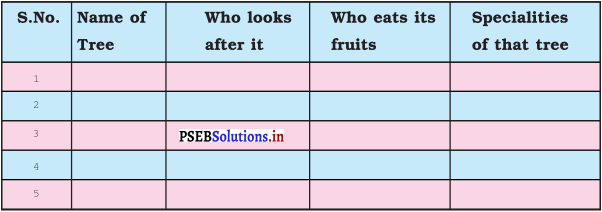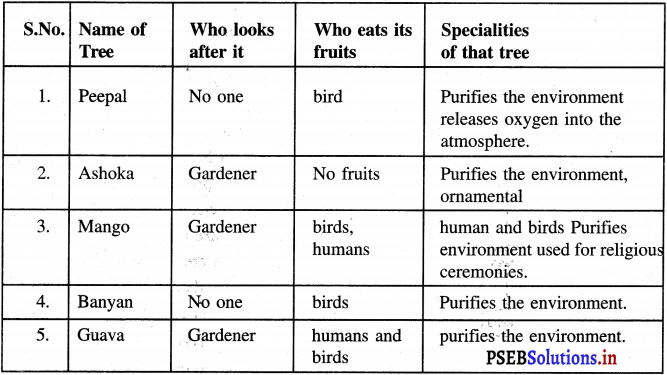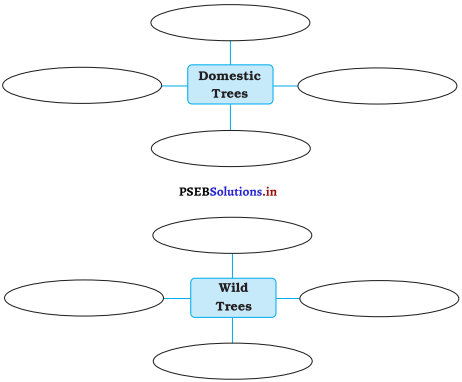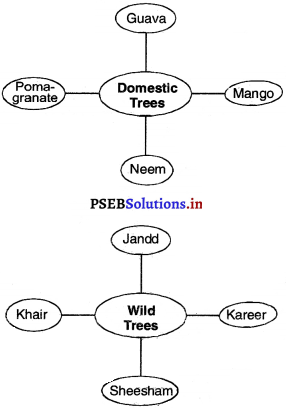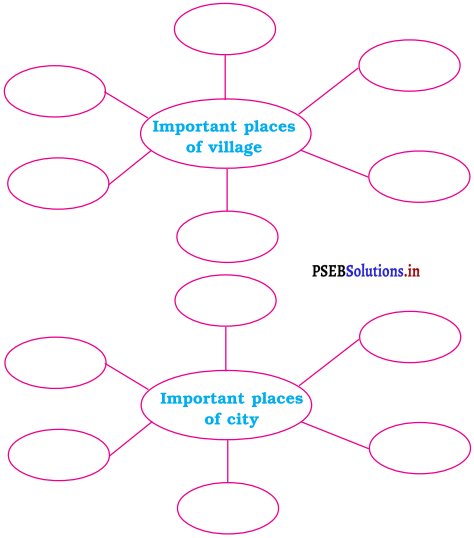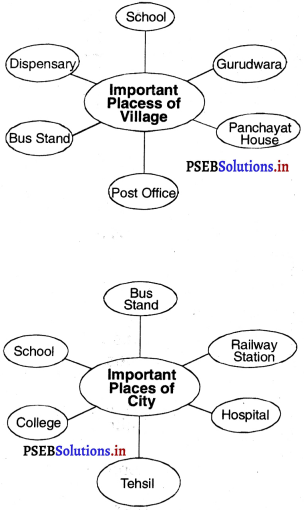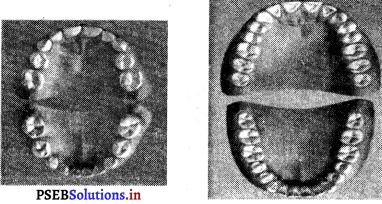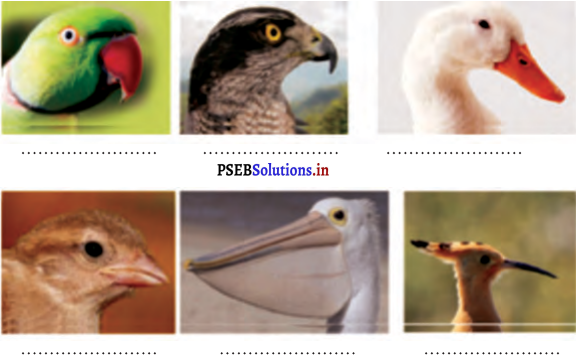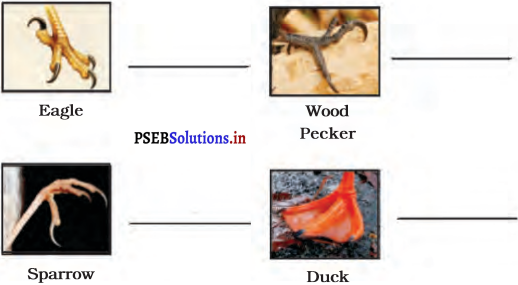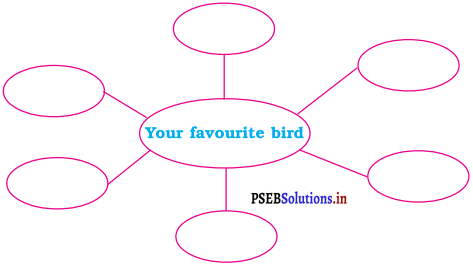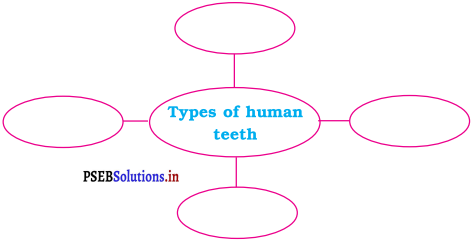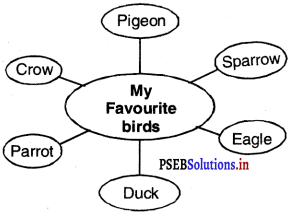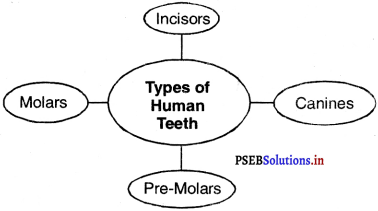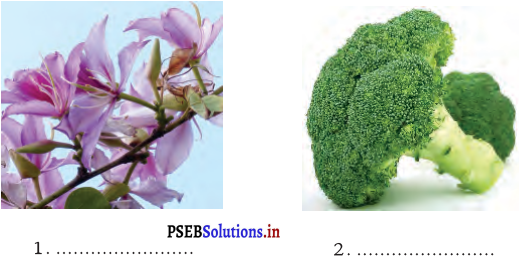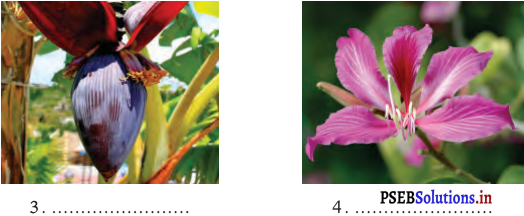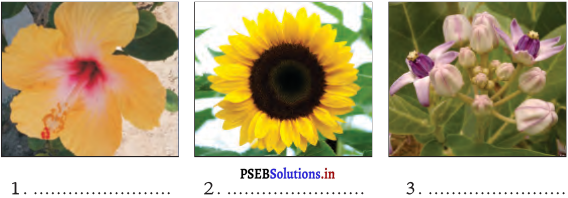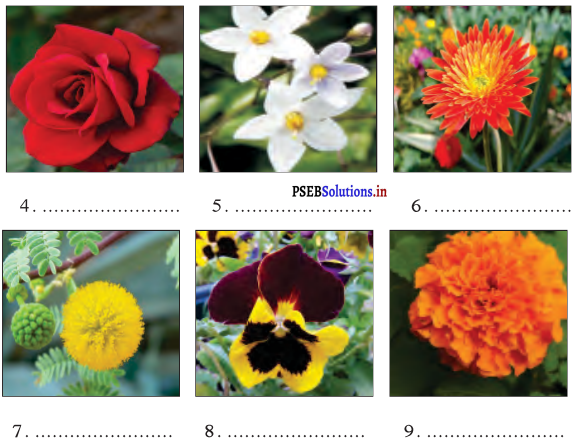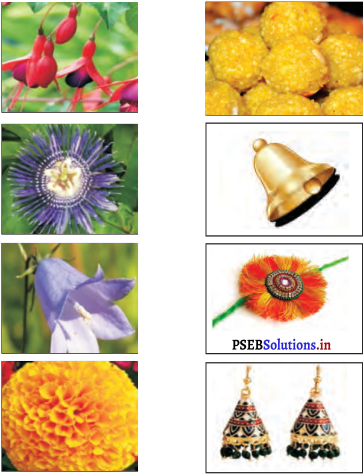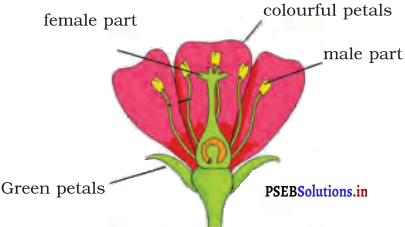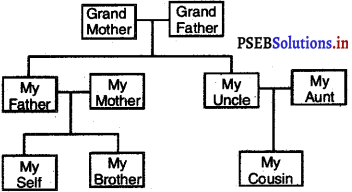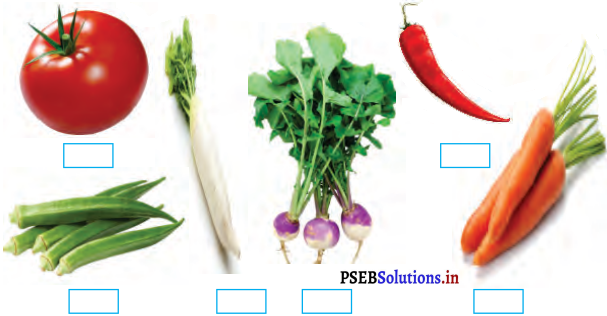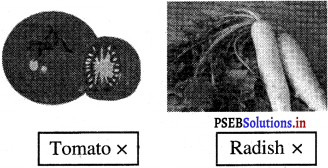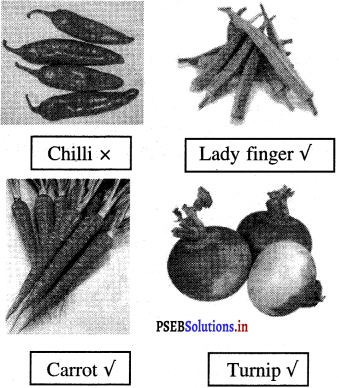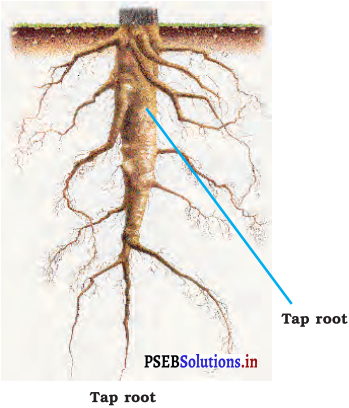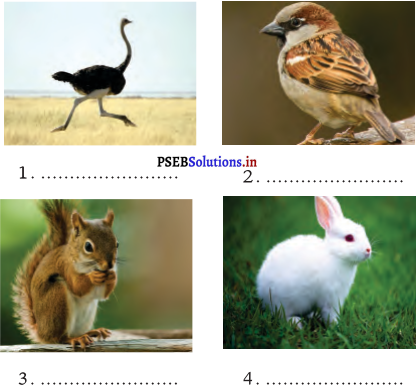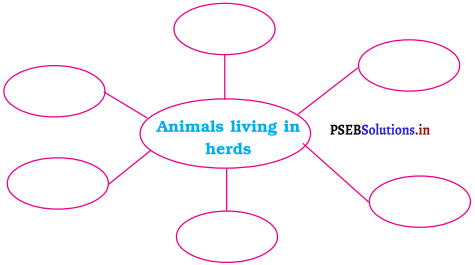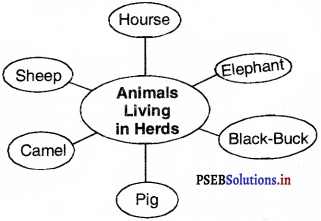Punjab State Board PSEB 4th Class EVS Book Solutions Chapter 10 Field to Home Textbook Exercise Questions and Answers.
PSEB Solutions for Class 4 EVS Chapter 10 Field to Home
EVS Guide for Class 4 PSEB Field to Home Textbook Questions and Answers
Textbook Page No. 62
Activity-1.
Keep different spices on a table in the classroom. Teacher will ask students one by one to identify various spices by tasting and smelling them. Prepare a list of spices identified by them.
With smell ………………………
With taste ………………………
Answer:
Do it yourself.
![]()
Textbook Page No. 63
Activity-2.
Which spices are used for cooking at your home? Know from your mother and write below :
Answer:
Turmeric, cumin seed, aniseed, Black pepper, Ajwain, corriander, cinamon, Clove, Mustard seed etc.
Activity-3.
Which cereals, pulses and edible oils are used in your houses? Write with the help of your mother :
Answer:
Cereal : Wheat, Maize, Bajra.
Pulses : Mash, Mothh, Moongi, Masar, Grams, Arhar etc.
Oil : Mustard oil, Olive oil, Soyabean oil, Ground nut oil, Cotton seed oil.
Textbook Page No. 67, 68
Question 1.
Write the names of three summer and winter vegetables each :
Summer Vegetables ……………………..
Winter Vegetables ……………………..
Answer:
Summer Vegetables Tinda, Ladyfinger, Arbi, Ramatori, Pumpkin.
Winter Vegetables. Carrot, Turnip, Pea, Cauliflower, Fenugreek, Spinach, Mustard.
![]()
Question 2.
Write the names of three summer and winter fruits each :
Summer Fruits ……………………..
Winter fruits ……………………..
Answer:
Summer Fruits. Water melon, Muskmelon, Loquat, Peach.
Winter Fruits. Orange, Chickoo, Apple.
Question 3.
Guess, what is it? [Hari aur Lai Mirch, Nariyal, Piaz, Chhalli, Kela (Banana)]
(a) Katore ch Katora, Beta Baap Toh vi gora.
(b) Vatt te Khara patwari, lattan thothian Sir bhari.
(c) Nikka Jiha sipahi, Odi Khich ke vardi lahi.
(d) Hari ci, man bhari ci, lallan moti jari ci Raja Ji de bagh ch dushala lye khari ci.
(e) Hari-Hari Laal-Laal lagdi c sohni, Muh vich pa lyi bari hoi anhoni.
Answer:
(a) Nariyal,
(b) Piaz,
(c) Kela (Banana),
(d) Chhalli,
(e) Hari aur Lai Mirch.
![]()
Activity-4.
Identify and write the names in front of pictures given below. Write the names of two more such crops, in the spaces given :
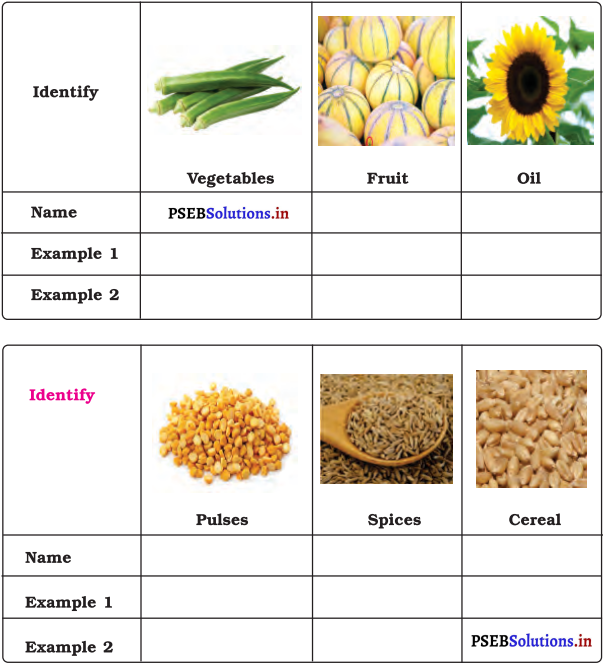
Answer:
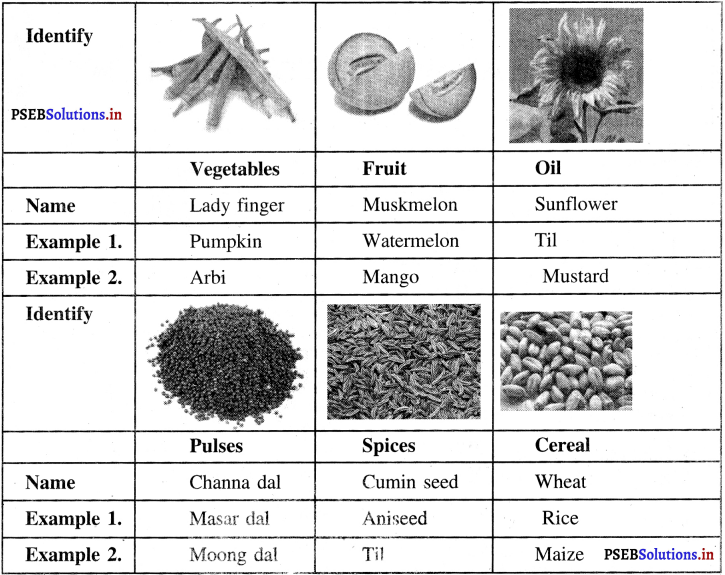
![]()
Textbook Page No. 69
Question 4.
Write the names of spices produced in South India.
Answer:
Black pepper, cumin, curry leaves, clove, cinnamon, cardamom etc.
Question 5.
How do the fruits and vegetables reach our home?
Answer:
Growers or farmers take their produce to the main market, there the small vendors purchase these fruits and vegetables. They sell in the streets. We purchase from them according to our needs.
Question 6.
Which fruits are grown in your area?
Answer:
Guava is they’main fruit grown in our area.
![]()
Question 7.
Write the different stages of farming according to the proper order in the column provided :
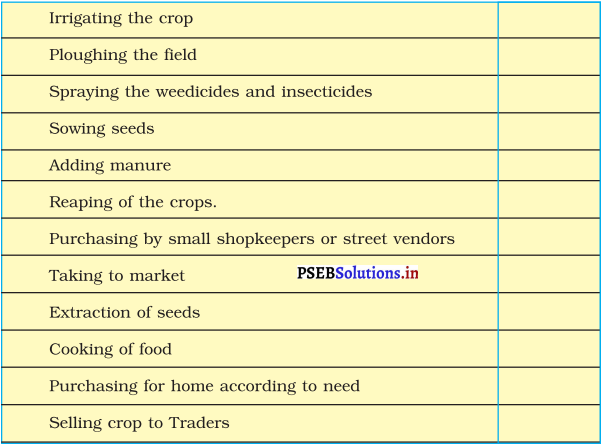
Answer:
| Wrong order | Proper order |
| 1. Irrigating the crop | 2 |
| 2. Ploughing the field | 5 |
| 3. Spraying the weedicides and insecticides | 4 |
| 4. Sowing seeds | 1 |
| 5. Adding manure | 3 |
| 6. Reaping of the crops | 6 |
| 7. Purchasing by small shopkeepers or street vendors | 9 |
| 8. Taking to market | 8 |
| 9. Extraction of seeds |
2 |
| 10. Cooking of food | 7 |
| 11. Purchasing for home according to need | 11 |
| 12. Selling crop to Traders | 10 |

